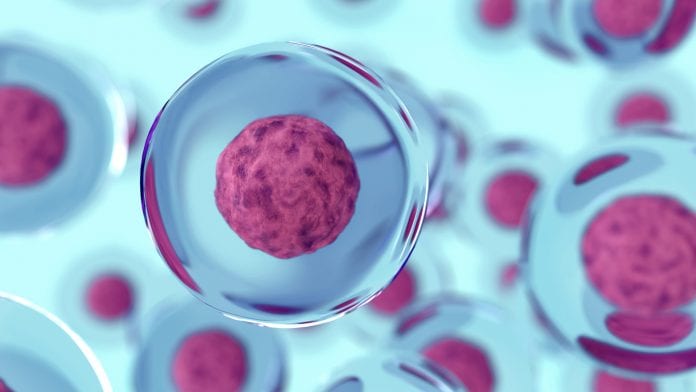
For the first time, a team led by researchers at the Garvan Institute of Medical Research have pinpointed individual cells that cause autoimmune disease from patient samples.
Currently, there are more than 100 known different autoimmune diseases. However, what unites all these different diseases is that they arise from an individual’s own cells – rare and mysterious immune cells that target not external viruses and bacteria but the body’s own healthy organs and tissues.
The researchers also discovered how these cells ‘go rogue’ by evading checkpoints that normally stop immune cells from targeting the body’s own tissues. The findings from the study could have significant implications for the diagnosis and treatment of autoimmune disease.
Professor Chris Goodnow, co-senior author of the published work, Executive Director of the Garvan Institute and Director of the UNSW Sydney Cellular Genomics Futures Institute said: “Identifying these rogue immune cells is a significant step forward for how we study autoimmune disease – and crucially the first step to finding ways to eliminate them from the body entirely.”
Only addressing the symptoms not, the cause
Goodnow explains: “Current treatments for autoimmune disease address only the symptoms, but not the cause. To make more targeted treatments that address disease development and progression, we first need to understand the cause.
“We have developed a technique that allows us to look directly at the cells that cause autoimmune disease – it’s as though we’re looking through a new microscope lens for the first time, learning more about autoimmune disease than was ever possible before.”
The origins of autoimmune diseases
Less than one in 400 cells are deemed ‘Rogue’ so studying them can be a challenge. Previous analysis to date has at best revealed ‘averages’ of the vast mix of cells in a patient’s sample.
Dr Mandeep Singh, first author of the published paper, said: “Using cellular genomics, we developed a method to ‘zoom in’ on these disease-causing immune cells in the blood samples of four patients with cryoglobulinaemic vasculitis – a severe inflammation of the blood vessels.”
By first separating individual cells, and then separating their genetic material, the researcher team isolated immune cells that produced ‘rheumatoid factors’ – antibody proteins that target healthy tissues in the body and are associated with the most common autoimmune diseases, including rheumatoid arthritis.
Once isolated, the researchers then analysed the DNA and messenger RNA of each of these ‘rogue’ cells, scanning more than a million positions in the genome to identify DNA variants that may be at the root of the disease.
How autoimmune diseases have evolved
Through the researcher’s analysis, it was discovered that the disease-causing immune cells of the vasculitis patients had accumulated several mutations before they produced the damaging rheumatoid factors.
Dr Joanne Reed, co-senior author, head of Rheumatology and Autoimmunity Group at the Garvan Institute said: “We identified step-wise genetic changes in the cells at the root of autoimmune disease for the first time, tracing an ‘evolutionary tree’ of how normal immune cells develop into disease-causing cells,”
Remarkably, the researchers found that some of the first gene mutations that occurred in these rogue cells were known to drive lymphomas (cancerous immune cells).
“We uncovered ‘lymphoma driver mutations’, including a variant of the CARD11 gene, which allowed the rogue immune cells to evade immune tolerance checkpoints and multiply unchecked,” explains Goodnow, who first hypothesised that disease-causing autoimmune cells employ this cancer tactic in 2007.
Additionally, the researchers found that cells with the lymphoma driver mutations accumulated further mutations that caused the rheumatoid factors they produced to aggregate, or ‘clump together’, at lower temperatures.
Reed explains: “This explains the patients’ cryoglobulinaemic vasculitis, a severe condition that develops in some people with Sjögren’s syndrome, systemic lupus, rheumatoid arthritis, or hepatitis C virus infection. In these individuals, rheumatoid factors in the blood aggregate at colder temperatures closer to the skin and in the kidneys, nerves, and other organs, which damages blood vessels and often proves very difficult to treat.”
The future of personalised diagnosis and treatments
Reed concludes: “In our study, we uncovered specific mutations that mark early stages of autoimmune disease. If we can diagnose a patient at these stages, it may be possible to combine our knowledge of these mutations with new targeted treatments for lymphoma to intervene in disease progression or to track how well a patient is responding to treatments,”
Therefore, not only have the research findings uncovered the root cause of an autoimmune disease but also the ability to identify and investigate specific immune cells at such resolution has vast potential for future treatments to target the cause of all autoimmune diseases.
The researchers are now planning follow-up studies to investigate mutations of autoimmune cells in a range of other diseases, including lupus, coeliac disease and type 1 diabetes.
The findings, published in the journal Cell, are part of the visionary Hope Research program.






















